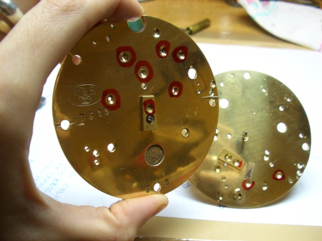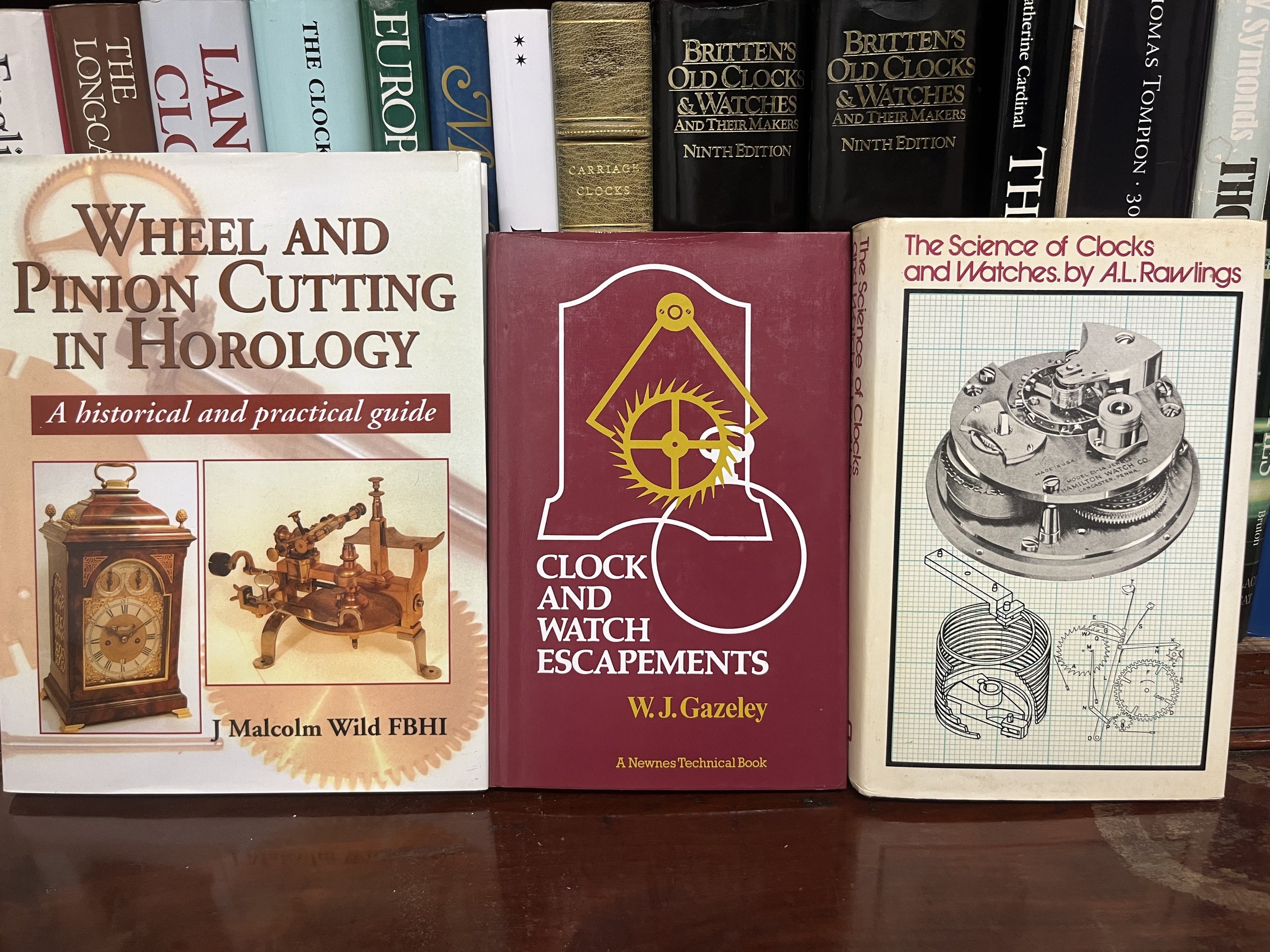For those curious about what takes place during a mechanical overhaul at our workshop in Weyhill, Hampshire, here is another servicing diary entry. This time it’s the turn of an antique timepiece Carriage Clock (timepiece means that the clock has only one train of wheels and therefore does not strike or chime).
This is a small brass cased French carriage clock from around 1890-1900 and has an eight day duration. The dial is 4’ and there is some damage to the enamel surface in the upper right-hand corner. There are bevelled glass panels on all four sides and one oval shaped one on the top of the case, two of which have some slight damage along the edges. The case has previously been lacquered which now shows some signs of wear and removal over several years, possibly due to polishing. The maker and provenance are not known as the movement and the case are unsigned.
The first thing that becomes obvious upon inspecting the mechanism is that the platform is not the original one that would have been made for this clock. The existing platform has been poorly modified in order to make it fit this movement by cutting away some of the bottom plate. It is worth bearing in mind that a repair such as this with a component that is clearly not original is likely to decrease the value of the clock.
The customer has been given the option to have the platform replaced with a more suitably-sized version at an additional cost, but has declined as the current one appears to function well.
I can see that there is some evidence of holes having been bushed by someone in the past. Generally these have been carried out well with no damage to the surrounding area of the plate, although I notice one with a slightly untidy oil sink which I can quickly correct once it is apart.
The pivots seem to be in good overall condition with no re-pivoting required – a small amount of burnishing should get rid of the minor grooves in some places.
When the mainspring is removed from the barrel it is evident that it has a conical shape to it which is likely to be the result of it having been removed and replaced by hand. The fact that it is also slightly set – the inner coils are failing to return to their unwound position – means that I will replace this spring.
In order to replace the mainspring I have to measure the barrel width, depth and the thickness of the current mainspring. I am aware that a common issue nowadays is that mainsprings are more powerful than before – this is due to a new rustless steel alloy which is being used in their production. With this is mind I have made it a habit to downsize the thickness by 0.5mm when ordering new springs to try and avoid this issue. If the mainspring is too powerful for the clock it may prove difficult to wind and, in extreme cases, could cause some damage to the clock.
The new mainspring was bought from HS Walsh to the exact size needed, therefore there was no need to adjust the length in any way. It is important that a mainspring is thoroughly cleaned before fitting as they are often coated in a compound designed to keep away the rust which needs to be removed. I do this by first cleaning the spring with soapy water and then placing it in the horolene for several minutes.
To service the main part of the mechanism (everything but the platform), components are placed in the clock cleaning fluid in the ultrasonic tank for 5 minutes before going into the rinse and finally being dried off using a hairdryer.
Once the components have been cleaned and dried I start with the basic servicing routine of burnishing the pivots. After any wear has been removed and the pivots are burnished to ensure a hardened surface and the train is replaced between the plates to check for any holes which may need bushing. It is important to carry out this check after burnishing as the process will remove some of the material from the pivots, decreasing their diameter and therefore possibly resulting in a pivot which is too small for the original hole.
I identify two holes which require attention – the pivot holes of the contrate wheel both back and front plate. The particular pivot hole in the back place has a recess surrounding it to allow a screw to act on the end of the pivot thus controlling the end shake of this arbor. This is a vital part of the escapement as it will determine how the escape wheel pinion leaves and contrate wheel teeth interact and can have a significant effect on the amplitude of the escape wheel. It is therefore important to ensure that the bushed hole is flush with the recess. I decide to use a French bush to achieve this as it can be hammered in to place and then a small brass pip is snapped off. The front pivot hole is bushed as normal with an oil sink cut to the size of the original.
The oil sinks which I had previously identified as having been left rather untidy are corrected using rose cutters to bring them back to the original diameter. It is important the oil sinks are neat and any bushing is left flush – this ensures that the oil will remain in the place where it is needed without leaking onto the clock plate.
The platform escapement is cleaned in the watch cleaner, ensuring any small components are secured in a small basket before starting. Once clean and dried, the escapement is worked on in the watch lab to minimise the potential for dust etc. entering the cleaned components.
I start by checking all the vital components under the microscope to ensure there is nothing which might need replacing. The jewelled holes, pallet stones, escape wheel teeth, escape wheel pinions, all pivots and the hairspring are checked and all are in good condition.
Once all the components have been checked the holes are pegged out using cocktail sticks dipped in methylated spirits. This ensures that any small particles which may have gathered during my inspections of the components are removed as they can have a significant effect on the amplitude of the escape wheel in such a small assembly.
Once both the movement and the escapement are back together, the platform is replaced on top of the movement and the entire assembly is placed on a timing machine. After some small adjustments to the beat and the rate it is clear that the clock is running very well – the escape wheel has an amplitude of 277 degrees and there are minimal fluctuations to the rate in several positions.
























